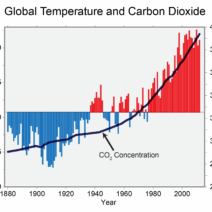The climate of New Jersey is a captivating interplay of maritime influences and continental characteristics, yielding a unique atmospheric tapestry that warrants exploration. With its position nestled along the East Coast, New Jersey experiences a diverse climate that impacts not only the natural environment but also the human experience and local ecosystems.
Primarily, New Jersey boasts a humid subtropical climate, particularly in its southern stretches, which transitions to a humid continental climate as one moves northward. This transition is influenced by the geographic disposition of the state, bordered by the Atlantic Ocean to the southeast and influenced by the Appalachian Mountains to the west. The juxtaposition of these geographical features cultivates a dynamic climate that produces notable seasonal variations and creates an intriguing ecological backdrop.
Winter periods in New Jersey can be characterized by their unpredictability. Northeasterners often associate winter months, from December to February, with frigid temperatures and a propensity for snow. Average temperatures can oscillate between 30°F to mid-40s°F, but sudden arctic air incursions can lead to chilling spells. In addition to the cold, the state can experience nor’easters—powerful storms that can unleash heavy snow and strong winds. These weather events draw attention, as they disrupt daily life and pose challenges for local infrastructures.
As spring approaches, New Jersey transitions towards milder weather patterns. The months of March through May herald the blooming of flora, with vibrant wildflowers and budding trees adorning the landscape. Crocuses and daffodils signal the end of harsh winters, while warmer temperatures, averaging between 50°F and upper 70s°F, invite outdoor explorations. However, this season is not without its complications. The increase in humidity can lead to thunderstorms, with the state occasionally witnessing severe weather phenomena, including tornadoes.
The summer months, from June to August, showcase New Jersey’s full maritime temperament. Temperatures can soar, frequently reaching the 80s°F and 90s°F. The influx of vacationers to the Jersey Shore during this time speaks volumes about the appeal of coastal breezes, which offer a welcome respite from the sweltering heat. Beach communities thrive as oceanic breezes moderate temperatures along the shore, fostering beach culture and a myriad of recreational activities. Yet, summertime humidity can lead to uncomfortable conditions, emphasizing the delicate balance of New Jersey’s climatic elements.
As autumn emerges, from September to November, the state captivates inhabitants and visitors alike with breathtaking foliage. The cooling temperatures, typically ranging from the mid-60s°F to low-70s°F, create an inviting atmosphere conducive to outdoor activities, such as hiking and apple picking. This season is often celebrated for its vibrant landscapes, contributing to a culture deeply intertwined with nature’s cyclical rhythms. However, it is also a time when hurricanes may still influence the region, as remnants of tropical storms occasionally reach New Jersey, testing the resilience of coastal communities.
One of the most significant features of New Jersey’s climate is its coastal influence. The Atlantic Ocean serves not only as a boundary but also as a moderating force on temperature. Coastal breezes provide a refreshing contrast to oppressive heat in summer months while also contributing moisture that can lead to increased precipitation throughout the year. The importance of this maritime effect cannot be overstated, as it contributes to the lush landscapes that characterize the state, supporting diverse ecosystems that include wetlands, forests, and the iconic pine barrens.
Moreover, the climate of New Jersey significantly impacts its agricultural practices. The varying climate zones support a diverse range of crops, from cranberries to blueberries, making the state a vital agricultural hub. Local farmers adapt their practices according to seasonal changes, employing strategies that take advantage of the fertile soil nourished by the climate. Understanding the intricate relationship between climate and agriculture is essential, as this knowledge informs sustainable practices that contribute to food security in the region.
However, climate change poses an existential threat to New Jersey’s delicate equilibrium. Rising sea levels threaten the coastal communities, leading to concerns about flooding, erosion, and the loss of habitat. Increased temperatures and altered precipitation patterns challenge agricultural outputs and biodiversity, making local ecosystems increasingly vulnerable. With an understanding of these underlying issues, New Jersey’s residents are prompted to engage actively in climate advocacy, recognizing the urgency of the situation and the need for sustainable practices.
In conclusion, the climate in New Jersey is a complex amalgam of coastal and continental influences, producing diverse and sometimes tumultuous weather patterns that shape the landscape and influence human behavior. Understanding the nuances of this climate not only enhances appreciation for the local environment but also emphasizes the critical need for conscious stewardship to combat the ramifications of climate change. As climate patterns evolve, maintaining an enduring commitment to the environment will be paramount for future generations in New Jersey and beyond.








